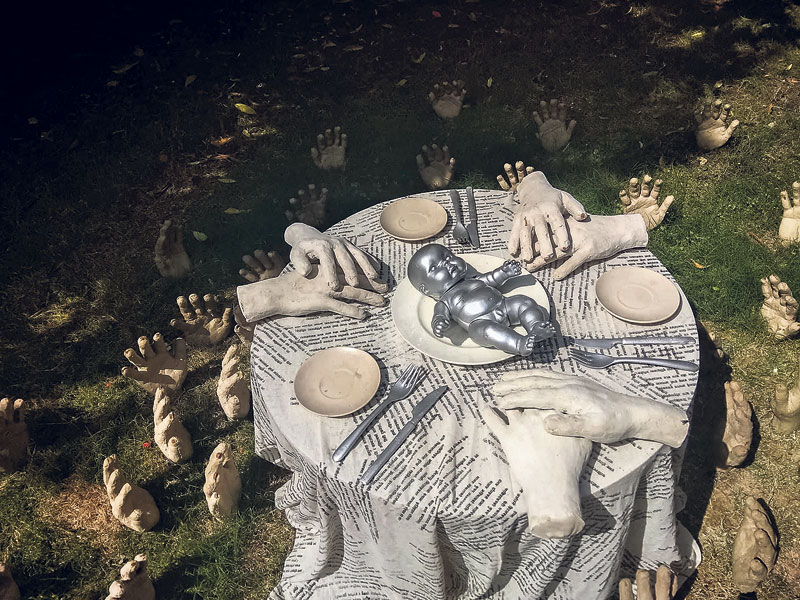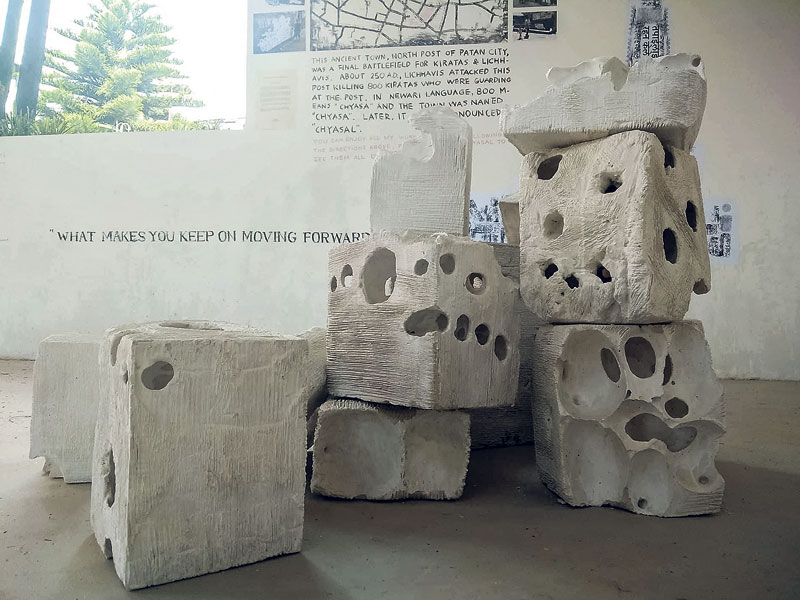KATHMANDU: Gallery MCUBE hosted the ‘Artist in Residence Seventh Season Exhibition’ on June 23 in Mitra Road, Patan Dhoka. The exhibition featured the works of four national as well as international senior artists in an open theme. Artists C.C. Chang and Chen Siao Chi from Taiwan along with Kapil Mani Dixit and Jupiter Pradhan from Nepal worked exclusively for exhibition.
One of the installations by Taiwanese artist Siao-Chi Chen reminded the audiences of nude performance art at the exhibition’s opening day. Chen had a mirror laid in one corner that asked a profound question - “If you were Yamaraj, the Lord of Death, what kind of death-related messages would you deliver to the people?” He had asked the question to Patan residents and the replies were hung up across the wall, forming a myriad of ideas that implied Death as the ultimate truth.

Ninth National Art Exhibition in photographs

Kapil Mani Dixit, who worked with Plaster of Paris, commended the residency program saying it helped him interact and learn from domestic as well as international senior artists. “I usually work inside my studio and participating in a residency program was something different. It also gave me opportunities to explore and learn Taiwanese culture,” said Dixit.
This is the first time that Dixit has worked on a 3-D art, as opposed to his usual 2-D nude art. His series of sculpture named Khokro—which translates to emptiness—consisted of big and small voids across 13 individual sculptures. He said the voids reflected the emptiness and façade that exist in national political scenario caused by persistent brain-drain. Brian-drain, according to him, not only affects the composition of skilled manpower in the country but also makes an impact on their social relationships.
Dixit’s sculpture series can also be translated as a memoir of 2015 Gorkha Earthquake as it reflects the suffering and devastation that the quake left behind.

Similarly, other installations highlighted the power of triad in politics, and featured intricate textures of traditional windows and doors in the shape of a chariot.
Rabindra Gopal Baidya, an art enthusiast, commended the artists’ installations as something new in the Nepali art field. “People tend to expect big canvases and paintings when they think about an art exhibit. But this time it was different. Art is undoubtedly an important medium of expression.”
The exhibition will remain open until June 30, while the next residency program is believed to exclusively promote works of women artists.







































